These are the high points of our adventure.
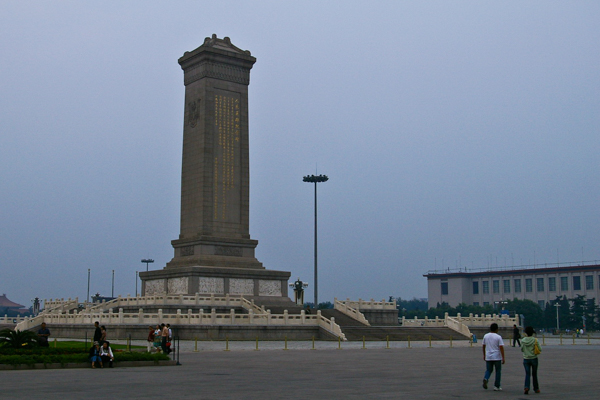
Our first stop in Beijing was Tiananmen Square, huge beyond description.
The "Monument to the People's Heroes" was ironically the center of the protest encampment in 1989 until it was broken up by tanks. It is a tiny part of the overall square.
When questioned our guide said only that he had been a baby at the time so couldn't comment. The incident is not taught in history class.
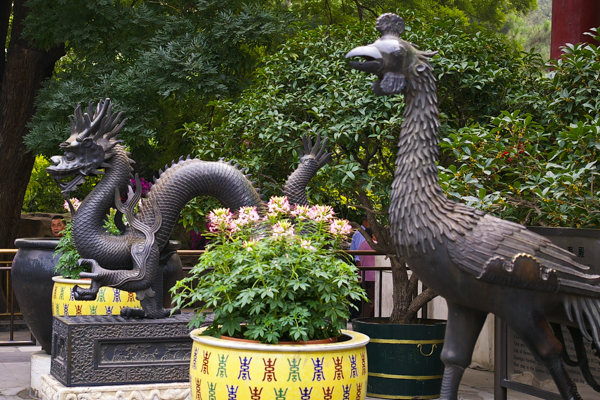
The Summer Palace located outside Beijing is a beautiful park.
In Chinese tradition the phoenix and dragon are symbols. The dragon represents the emperor and the phoenix the empress. We were told that usually the dragon occupies the primary position on the left, but the dowager empress Cixi preferred to see the phoenix in the primary position and that is the configuration here. This contradicts the statement at the link, which says the dragon is typically on the right. Who knows. To be sure, Cixi was one tough cookie.
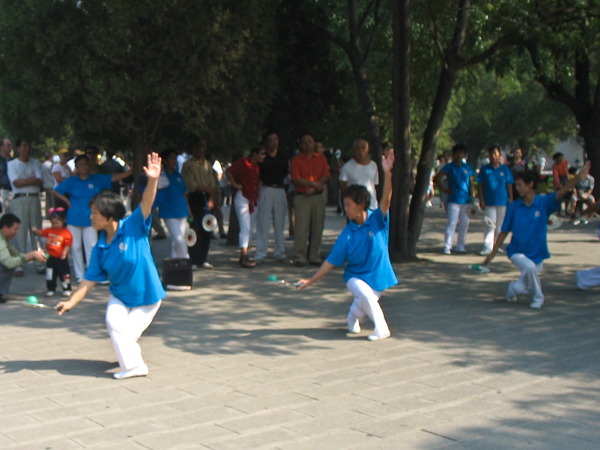
At the Temple of Heaven we got to see the locals gathering. There were several groups practicing a form of Tai Chi (or Taiji) done with paddles and balls. It is called Rhythmball. Follow the link to see a video performance. Although the video is in slo-mo, these performers weren't much faster.
This group had their synchronization down. Due to the uniforms, we guessed it was a club of some sort.
It was graceful beyond description.
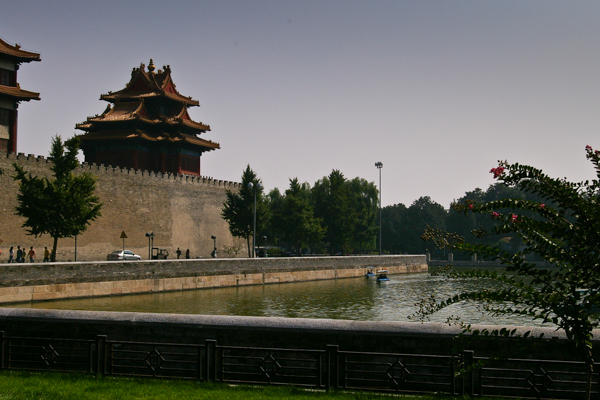
The Forbidden City lies in the heart of Beijing surrounded by a moat. By the time we got there we were getting pretty jaded with the magnificence of everything.
The golden roofs indicate the imperial functions of this area.
Everything was being refurbished in preparation for the expected crowds associated with the upcoming Olympic games.
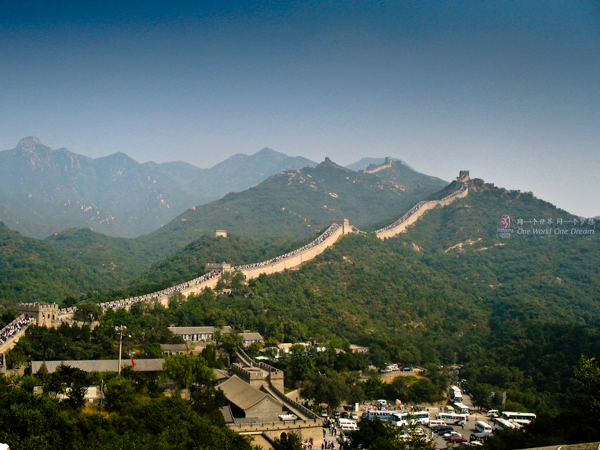
While staying in Beijing, we made a day trip to visit the Great Wall of China, which snakes through hilly terrain north of Beijing.
There are numerous access points. Our bus passed at least one scenic and uncrowded section to take us to the Badaling access "coincidentally" replete with souvenir shops – and crowds. When we asked our guide why he responded that the restaurant there was better. Perhaps.
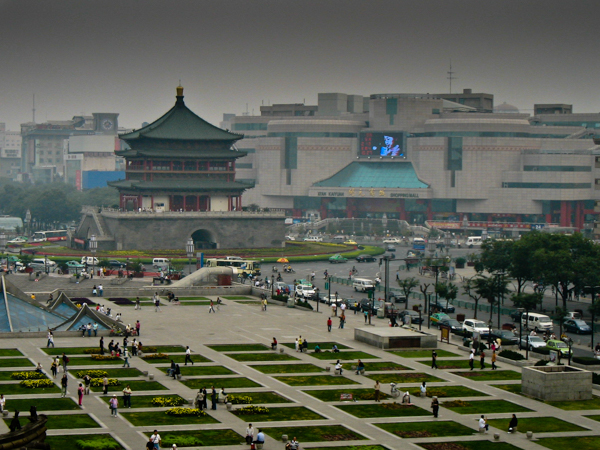
Xi'an is noted nowadays for the terra cotta warriors, but it is also the Chinese terminus of the Silk Road. It still has a large Muslim population and some of the best food that we had in China. The air pollution was, if anything, worse than Beijing's.
The bell tower is in the heart of the city. I don't remember if the bells struck the hour or not, but every morning the park near our hotel played music that we were told was composed by Chairman Mao.
If what we heard was typical, he was a good song-writer. Can't find any web links, however, that mention any musical talents.
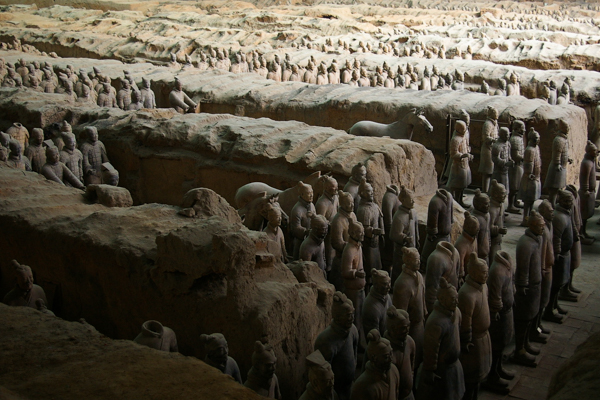
In the 3rd century BC, the emperor Qin Shi Huang had artisans create these life-size figures to accompany him to the after-life. Each warrior is unique. Afterwards, the artists were murdered to prevent their ever replicating their feat!
The "army" was destroyed shortly after the emperor's death by invading forces. It was forgotten for two millennia until being unearthed in 1974.
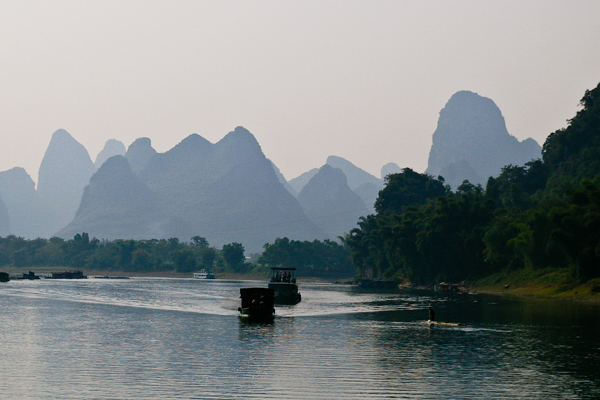
From Xi'an we flew to Guilin for our visit to Yangshuo and the Li River valley.
As a fan of Chinese landscape art I had always assumed that the pointy peaks so often seen were exaggerations. Not true! Our visit to the Li River showed us the originals of those peaks.
One afternoon we took a river cruise down the river and back. The river reach below Yangshuo is not as crowded as the reach between Yangshuo and Guilin, but we still saw many tourist boats of all sizes. At various points along the shore local people had set up floating "stages" where they performed traditional music and dances for the benefit of the tourists. Most of the tourists, by the way, were Chinese, not Westerners.
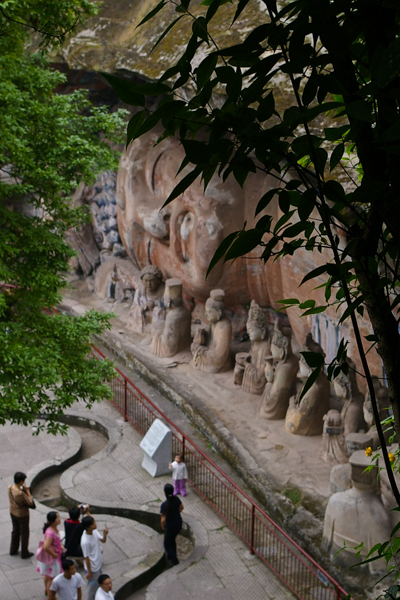
From Yangshuo we flew to Chongqing (most Americans know it as Chung King), the capital of Sichuan (Szechuan) Province. After two weeks of staying in Chinese hotels that ranged from luxury to quaint, we were surprised to find we would be in a Holiday Inn! It was a long way from Memphis, Tennessee.
Chongqing is the largest city in area in China – maybe in the world. The government increased its size dramatically when planning for the Three Gorges Dam, and its population is over 30 million.
While in Chongqing we visited the Dazu Grottos, a shrine with Buddhist, Daoist and Confucian images. It is a UNESCO World Heritage Site.
Although called the "sleeping Buddha" this sculpture depicts the Buddha as he is entering Nirvana attended by various personages.
For a more extensive album of sculptures at this site, see the descriptions and pictures at art-and-archaeology.com.
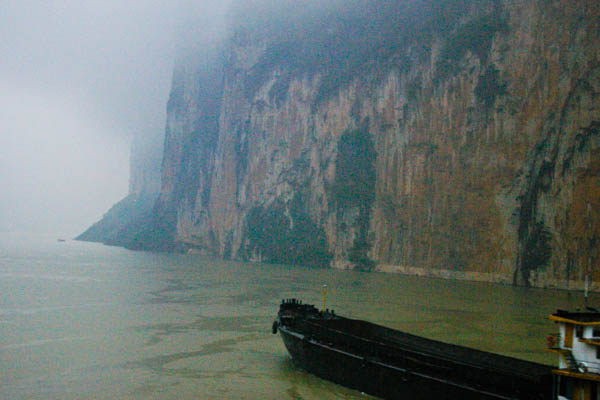
After leaving Chongqing, we spent three days on the river cruise.
At the time that we visited in 2006 the reservoir behind the Three Gorges Dam was rapidly filling. The dam reached full production in 2012. Its long-term benefit, whether for power production, flood control or river commerce, is controversial. There is a need for clean electrical power, but the waste that we saw in cities such as Shanghai made us wonder if the power would be put to good use. The dam's capacity for flood control has turned out to be much less than originally touted. There have been too many other negative environmental and social results to summarize here.
We embarked at Chongqing on the Victoria Anna for our trip down the river. One of the first things that we learned was that the proper name of the river is Chang Jiang, which means "Long River." The Chinese called only the reach nearest Shanghai "Yangtze." The western countries picked it up there and now the entire river is known by that name, at least outside China. It is the longest river in Asia and the third longest in the world after the Nile and the Amazon.
By the time we reached some of the "scenic" spots it was late in the day and we were socked in by smog, fog, clouds and rain.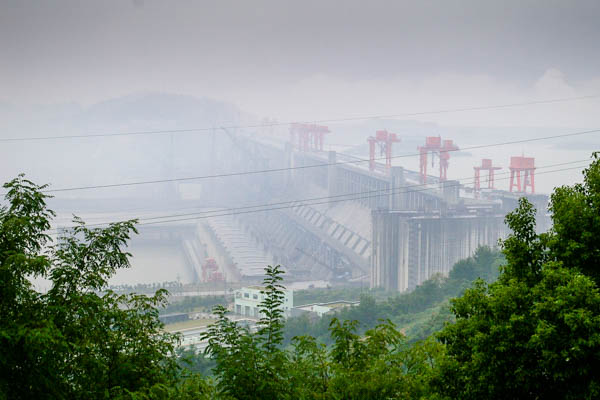
When Americans think of large dams, we think of the Hoover Dam – very tall (over 700 feet) but narrow. The Three Gorges Dam, the largest in the world, is very wide – over a mile – AND very tall (almost 600 feet). The scale is deceiving.
This is the dam proper. The ship locks are behind me.
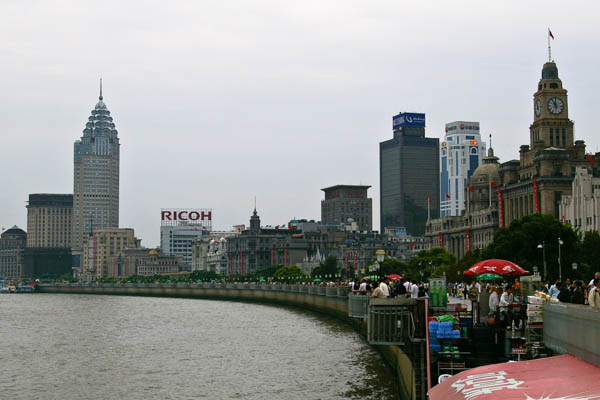
Shanghai is one of the great cities of the world. In the years since China has opened up, its growth has exploded. One of the men on our tour had visited there in the 70s and he said that he could barely recognize the place. From what I've read, it has changed again almost as much since we visited.
The Bund is the older commercial district dating to the colonial era. The word "bund" means an embankment or an embanked quay. It was crowded with tourists – mostly Chinese.
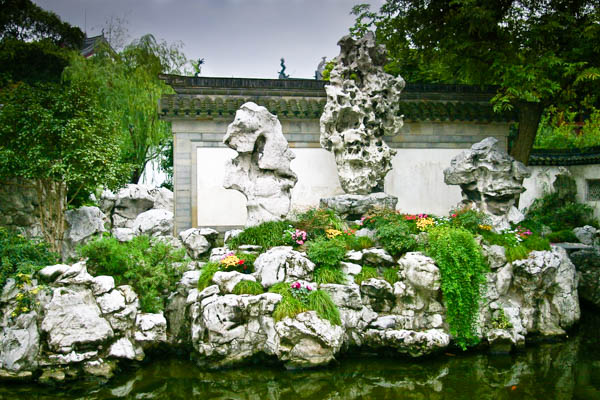
Older Shanghai districts were for their elaborate gardens prior to the Communist era. We visited the Yuyuan Garden.
One of the highlights of the garden is the tall rock, known as the Exquisite Jade Rock, in the center of this grouping. Throughout China unusually sized and shaped rocks are given prominent places.
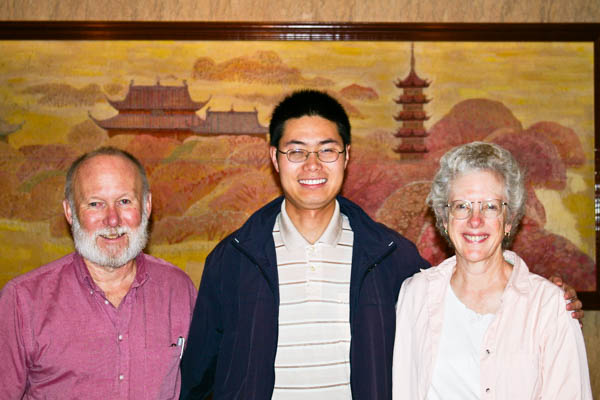 Jia
was our faithful leader throughout our travels. I'm
sure we tried his patience more than once, but he was always cheerful
and enthusiastic.
Jia
was our faithful leader throughout our travels. I'm
sure we tried his patience more than once, but he was always cheerful
and enthusiastic.
I loved his story about how he leaned to speak English so well. "Everyone in school could read and write English," he said, "but few could speak it fluently. I used to wake up early in the morning and go to an isolated park where I would talk to the trees."
It's that kind of dedication that makes a wonderful guide.
Click your "back" button to return to the previous page or click for our picture album.